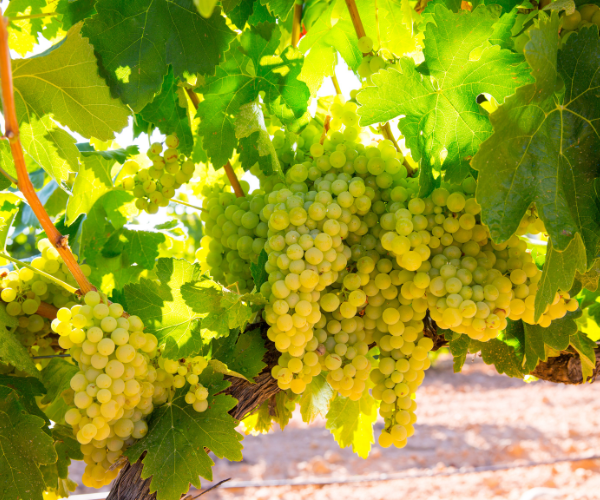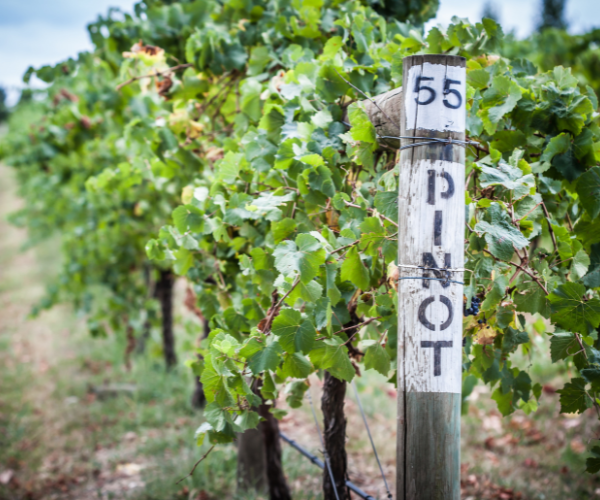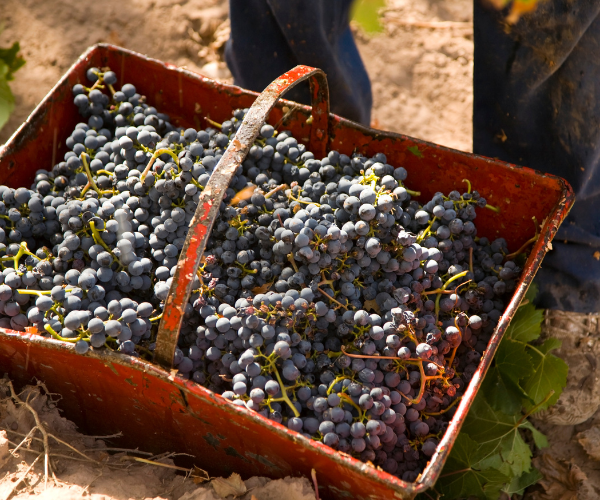
The grape is the most important aspect of any wine, accounting for over 95% of each wine’s chemistry and more-or-less deliciousness. So, the first step in learning wine is getting to know your grapes. Here are some fun facts about the grapes that may make up the wine you’ll enjoy with dinner tonight.
Chardonnay
Do You Know the Way to Chardonnay?
Chardonnay is both a grape variety and a wine made from that variety (a ‘varietal’ wine). But few people know that Chardonnay is also a place located in France’s Burgundy region, the small-town home of an international super star.
Love It? Hate It? It’s Complicated…
Chardonnay has been our nation’s favorite white wine for decades, last year trouncing runner-up Pinot Grigio by 10-million cases. It’s also got its own certified haters, the ABC (Anything but Chardonnay) Club. But if you don’t like Chardonnay, maybe you just haven’t found a style that’s right for you.
What Does Chardonnay Taste Like? Not Much
Fresh-pressed Chardonnay juice is neutral, often compared to under ripe apple juice or water drawn off hay. Her remarkable skill is in expressing unique qualities of the vineyard and the winemaking, making Chardonnay the darling of winegrowers and winemakers around the world. With flavors ranging from steely and acidic (in France’s cold climate Champagne region) to mango-like and fleshy (in warm climates of California and Australia), Chardonnay is a “have it your way” wine. I compare Chardonnay to a great actress. You may not really know who she is, but she deserves an Oscar for her varied roles that all ring true.
Join us to explore Chardonnay’s varied expressions, along with Pinot Noir and Malbec during Friday's Get to Know your Grapes class at 6pm at Lincoln Square.
 “Buttery” Chardonnay isn’t all PR
“Buttery” Chardonnay isn’t all PR
After the primary fermentation turns juice into wine, Chardonnay often undergoes a second fermentation dubbed ‘malo-lactic’, which converts sharp malic acid (like a green apple) into soft lactic acid (as in milk and butter). Also, when aged in oak, Chardonnay develops diacetyl, a flavor compound that gives butter its flavor. So, it makes sense to pair Chardonnay with foods prepared or served with butter, including lobster dipped in butter, meats sautéed in butter and cow’s milk cheese (butter’s cousin). In contrast, the Sauvignon Blanc grape’s flavor compound is methoxy-pyrazine, which gives flavor to green herbs, green olives and green olive oil.
Pinot Noir
The Missing Link?
Pinot Noir is an ancient wine grape, originally described in the first century AD. In comparison, Cabernet Sauvignon was first described in the 17th century. In fact, Pinot Noir may be the link between the wild vine and vitis vinifera, the wine vine species. When grape fingerprinting was initiated in 1993, Pinot Noir’s unstable DNA led researchers to an enormous family tree, including Pinot Grigio (identical to France’s Pinot Gris), Pinot Bianco (Pinot Blanc), Pinot Meunier and 1,000’s of clones. (Cab has about 60 clones.) So, don’t just order Pinot, without stipulating which Pinot. That’d be like going into an Irish bar and asking “Is Murphy here?”
The Most Expensive Flavors on Earth
In 2018, a bottle of 1945 Romanee-Conti (100% Pinot Noir by French law) became the most valuable wine ever sold at $558,000 USD (nearly $22,000 per ounce). By comparison, Iranian Almas caviar – considered the rarest on earth – sells for about $1,000 per ounce.

Malbec
Il S’appelle Cot
Even though Malbec is associated with South America, his homeland is France, where his name is Cot.
Argentina Saved Malbec and Malbec Saved It Right Back
In the 1800’s, Malbec grew throughout southwest France until winegrowers tired of the grape’s vulnerability to their damp climate and ripped it up. In the nick of time, Malbec rootstock was transplanted to Argentina’s Quinta Normal Agricultura – a test garden of international plants – and forgotten. Fast forward to the 1960’s when agronomist Nicolas Catena envisioned wine exports as a boost to Argentina’s failed economy. With research from the Quinta Normal, Catena determined that Malbec would thrive in his desert climate and be a unique beacon for Argentine wine. His success is documented in The Vineyard at the End of the World: Maverick Winemakers and the Rebirth of Malbec by Ian Mount and by retail shelves loaded with Malbec.
 Condor Food
Condor Food
Catena turned his sights to the heavens; his Catena Zapata vineyard is planted at nearly 1,500 meters into the Andes. The trend is peaking with Argentine vineyards planted at over 3,000 meters above sea level. In comparison, the upper limit for European vineyards is about 500 meters.
Learn more about all three of these essential grapes in our Get to Know your Grapes class this Friday, July 21 at 6:30pm.

